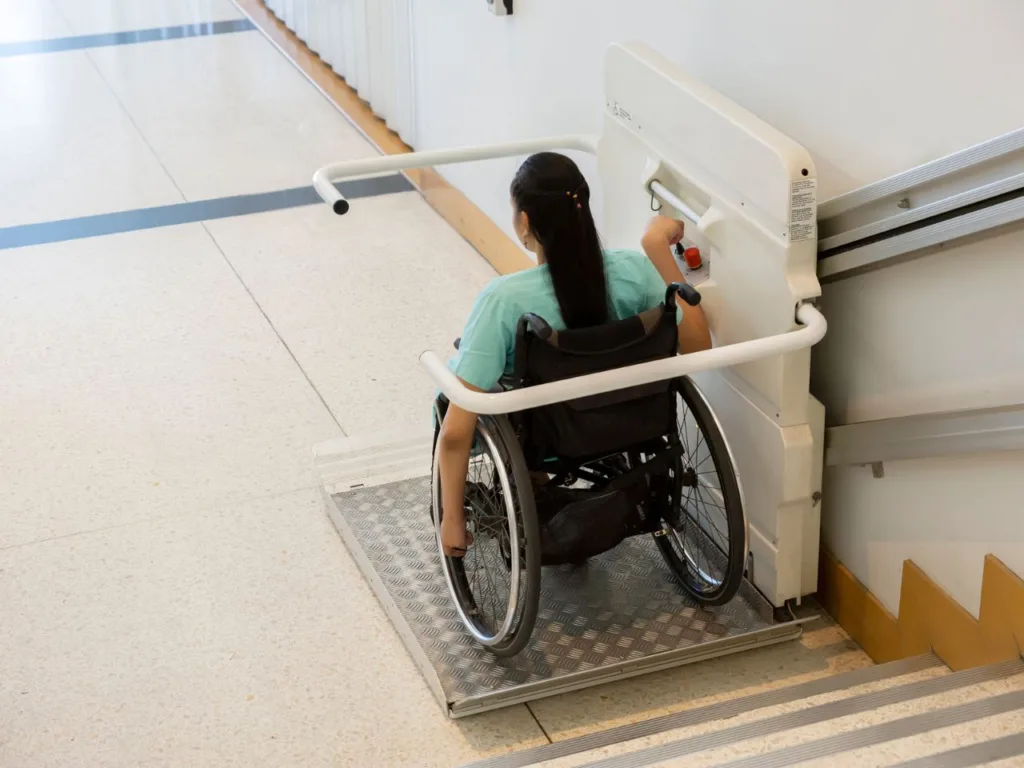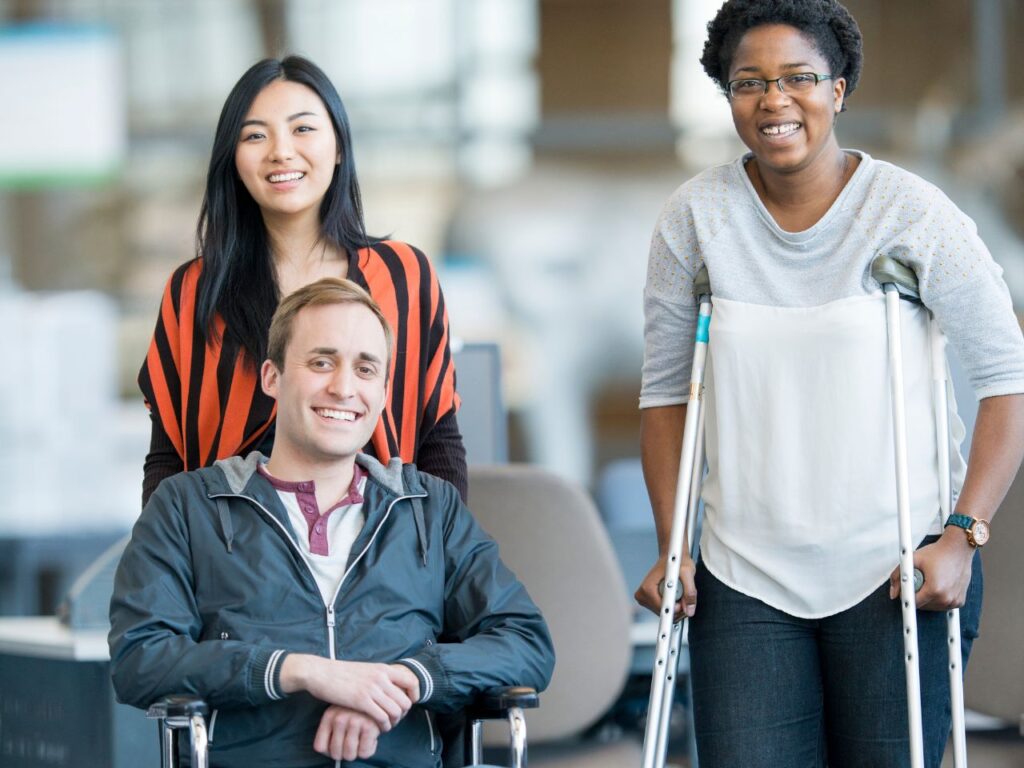Updated on November 7, 2024

Disability is a broad term that covers a wide range of physical, mental, and sensory impairments. Despite progress in awareness and inclusivity, people with disabilities still face stereotypes and misconceptions that contribute to stigma and discrimination. These stereotypes can have significant negative impacts, not only on individuals with disabilities but also on how society as a whole perceives and interacts with them. This article will explore some of the most common disability stereotypes, why they persist, and how they can be challenged.
What’s a disability stereotype?
A disability stereotype is a widely held and often inaccurate belief or assumption about people with disabilities. These stereotypes reduce people to a set of characteristics based on their disability, rather than recognizing their full humanity, individuality, and diverse experiences. Common disability stereotypes might include assumptions that people with disabilities are always dependent, need constant help, or are incapable of living a fulfilling life. These misconceptions can lead to discrimination and exclusion which ultimately affects how people with disabilities are treated in society.
10 common disability stereotypes
- People with disabilities are inspirational just for living their lives
- People with disabilities are dependent
- People with disabilities are a burden on society
- People with disabilities are victims
- People with disabilities are all the same
- People with disabilities cannot be productive workers
- People with disabilities cannot have relationships or families
- People with disabilities are always depressed
- People with disabilities cannot participate in sports or physical activities
- People with disabilities are defined by their disability
1. People with disabilities are inspirational just for living their lives
One of the most widespread stereotypes is the idea that people with disabilities are inherently inspirational simply because they exist. While it’s true that many individuals with disabilities achieve remarkable things, this “inspiration” narrative can be condescending. It often reduces people to their disability rather than recognizing their full humanity, including their strengths, struggles, and everyday experiences. It puts the focus on the disability instead of the person. This stereotype is rooted in a societal expectation that life with a disability is so difficult that merely existing or achieving anything at all is extraordinary.
2. People with disabilities are dependent
Another common stereotype is that people with disabilities are entirely dependent on others and cannot live independently. This misconception often leads to overprotectiveness or the assumption that they need constant care and supervision. While some individuals with disabilities may require assistance, many live independently, work, raise families, and participate fully in society. The harm this stereotype causes is that it undermines the autonomy and agency of people with disabilities. It can lead to paternalistic attitudes where others decide on their behalf, rather than empowering them to make their own choices.
3. People with disabilities are a burden on society
The stereotype that people with disabilities are a burden is damaging. Many people focus on the perceived costs of disability, such as healthcare, accommodations, providing accessible space, or social services. However, this view ignores the many ways in which people with disabilities contribute to society through work, creativity, and community involvement. This stereotype can lead to exclusion, discrimination, and a lack of investment in accessibility and support services. It also promotes a negative image of disability, associating it with weakness or deficiency.
4. People with disabilities are victims
Often, people with disabilities are portrayed as victims of their circumstances, deserving of pity rather than respect. This stereotype reduces them to their disability and frames their lives as something tragic. It can lead to condescending attitudes and a failure to recognize the full person beyond their disability. This narrative is harmful because it strips away the dignity and agency of people with disabilities, positioning them as passive recipients of charity rather than active participants in society.
5. People with disabilities are all the same
A significant misconception is the belief that all people with disabilities are the same, or that one disability represents the entire spectrum of experiences. This stereotype ignores the vast diversity within the disability community, which includes a wide range of physical, intellectual, sensory, and mental health conditions. This “one-size-fits-all” mentality can lead to a lack of understanding and appropriate support for individuals with different needs. It also sustains the idea that disability is a monolithic experience, rather than a diverse and multifaceted part of human life.
6. People with disabilities cannot be productive workers
A popular stereotype in the workplace is the belief that people with disabilities are less capable of being productive employees. There’s an automatic notion that they do less work than their non-disabled counterparts. This misconception often leads to discrimination in hiring practices, lower expectations, and a lack of opportunities for career advancement. However, studies have shown that employees with disabilities can be just as productive, reliable, and valuable as their non-disabled counterparts. Many people with disabilities bring unique perspectives, problem-solving skills, and creativity to their work.
7. People with disabilities cannot have relationships or families
Another damaging stereotype is the belief that people with disabilities cannot have romantic relationships, get married, or raise families. This comes from not understanding and accepting disability, as well as outdated views on sexuality and reproduction. This stereotype is not only untrue but also harmful, as it denies people with disabilities the right to fully participate in one of the most fundamental aspects of human life. It can lead to social isolation, discrimination, and a lack of support for people with disabilities who wish to pursue relationships or start families because not a lot of people want to partner with them.
8. People with disabilities are always depressed
A common misconception is that people with disabilities are inherently unhappy or depressed because of their condition. While some individuals with disabilities may experience mental health challenges, it is incorrect to assume that disability automatically leads to a poor quality of life. This stereotype can lead to further stigmatization and misunderstanding of both disability and mental health. It also overlooks the many ways in which people with disabilities find fulfillment, joy, and satisfaction in their lives.
9. People with disabilities cannot participate in sports or physical activities
The idea that people with disabilities cannot or should not participate in sports or physical activities is both limiting and inaccurate. Some disabilities may require modifications to be made but many people with disabilities are active in sports, from recreational activities to competitive athletics. This misconception often leads to exclusion from physical activities and a lack of opportunities for people with disabilities to engage in sports, which are important for physical health, social connection, and personal fulfillment.
10. People with disabilities are defined by their disability
Perhaps the most prevalent stereotype of all is the belief that a person’s disability defines who they are. This misconception reduces people to a single aspect of their identity, ignoring the many other aspects of their personality, experiences, and life. This is particularly harmful because it dehumanizes people with disabilities and makes them seem less than fully human. It can also lead to exclusion, discrimination, and a lack of opportunities for personal and professional growth.
How does disability stereotypes affect people living with disabilities?
Social exclusion and isolation
Stereotypes can lead to the exclusion of people with disabilities from social activities, relationships, and community involvement. They may be treated as outsiders or seen as different. This often leads to feelings of loneliness and isolation. A common example is a person with a disability getting excluded from social events because others assume they won’t be able to participate or contribute.
Lowered expectations and limited opportunities
Stereotypes often result in lower expectations for what people with disabilities can achieve. This can limit the opportunities they can access in education, employment, and personal development. This happens a lot in workplaces where an employer assumes that a person with a disability is less capable, leading to discrimination in hiring or promotions.
Reduced self-esteem and confidence
Constant exposure to negative stereotypes can harm the self-esteem and confidence of people with disabilities. They may internalize these misconceptions, doubting their abilities and worth. A child with a disability who is consistently told they are “inspirational” just for attending school may feel patronized rather than genuinely valued.
Barriers to independence
The stereotype that people with disabilities are dependent can lead to overprotection or unnecessary assistance, which can hinder their ability to live independently and make their own decisions. Family members or caregivers who think they are trying to help might make decisions on behalf of a person with a disability rather than allowing them to exercise their autonomy. This makes it more difficult for persons with disabilities to achieve independence.
Mental health challenges
The stress of facing stereotypes and discrimination can contribute to mental health challenges, such as anxiety, depression, and stress. There is also the constant need to prove oneself or combat negative perceptions and it can be exhausting. A person with a disability is likely to experience chronic stress or anxiety due to societal pressure to overcome stereotypes or prove their worth.
Discrimination and inequality
Stereotypes often lead to discriminatory practices in various areas of life, education, employment, healthcare, and public services. This can result in unequal access to opportunities and resources. A good example is a student with a disability not receiving the accommodations they need in school because of the stereotype that they cannot succeed academically.
Hindered personal growth and development
Stereotypes can limit the opportunities for personal growth and self-expression for people with disabilities. They may be discouraged from pursuing interests or taking risks due to societal expectations. A person with a disability might be discouraged from pursuing a career in a challenging field because of the stereotype that they won’t be able to handle the stress and demands that come with it.
How to treat people living with disabilities
Respect their autonomy and independence
Always respect the autonomy of people with disabilities. Allow them to make their own decisions and choices, just as you would with anyone else. If you’re with someone who uses a wheelchair, don’t push their wheelchair without asking. Let them control their movement and offer help only if they ask.
Use appropriate language
The kind of words you use is important. Use respectful and person-first language. For example, say “person with a disability” instead of “disabled person” to emphasize the individual, not the disability. Avoid terms that are outdated or offensive. Instead of saying “suffers from” or “is confined to,” simply state the fact, such as “uses a wheelchair” or “has a hearing impairment.”
Avoid making assumptions
The worst thing you can do is make a wrong assumption about anyone. Don’t make assumptions about what people with disabilities can or cannot do. Everyone has unique abilities and challenges, and it’s important to recognize and respect these individual differences. Don’t assume that a person with a visual impairment needs help crossing the street. Instead, you can ask if they would like assistance.
Promote accessibility
You can advocate for and support accessible environments that accommodate people with disabilities. This includes physical spaces, digital platforms, and services. A good example is if you’re organizing an event, you can ensure that the venue is wheelchair accessible, has clear signage, and offers services like sign language interpreters if needed.
Educate yourself
Disabilities are different, and even people with the same disability live differently. Take the time to learn about different disabilities and the challenges people with disabilities face. You can also share this knowledge with others to promote understanding and inclusion. A way to go is to read up on disability rights and etiquette, attend workshops, or participate in events that raise awareness about disability issues.
Be patient and flexible
If you’re working with a person with a disability, understand that they might require more time or different methods to accomplish tasks. Be patient and adaptable in your interactions. If you’re working with someone who needs more time to complete a task, be supportive and adjust your schedule or expectations accordingly. That way they can work at a comfortable pace.
Don’t focus solely on the disability
When interacting with someone with a disability, focus on the person, not the disability. Engage with them about their interests, hobbies, and experiences beyond their disability. It goes a long way to show that they are more than their disability and makes the interaction easy for them to navigate.
Conclusion
Stereotypes about disabilities are harmful and limiting, both for people with disabilities and for society as a whole. By challenging these misconceptions, we can create a more inclusive and respectful society. It’s important to see people with disabilities as full, complex human beings, with their strengths, challenges, and contributions. By doing so, we can break down the barriers that these stereotypes create and move toward a more equitable society for all. It’s just a disability, not a flaw.
MORE FROM CENTRE DISABILITY SUPPORT
Disability and Sex: What You Need To Know
STATISTICS ON DISABILITY IN AUSTRALIA
The Right Way To Refer To People With Disability
Top 100 Weirdest Phobias and Their Meanings
6 Interesting Facts You Should Know About Phobias
What Does Fitness And Exercise Look Like For People With Disabilities?



